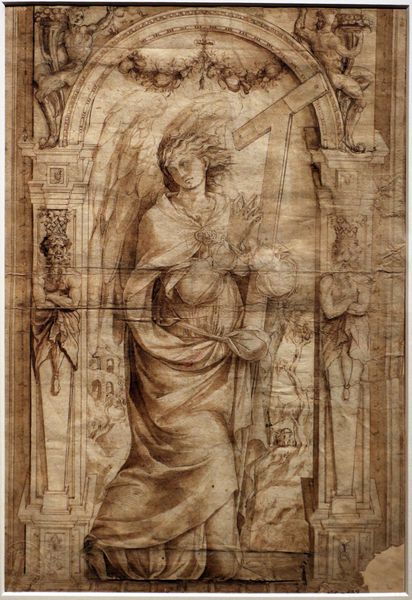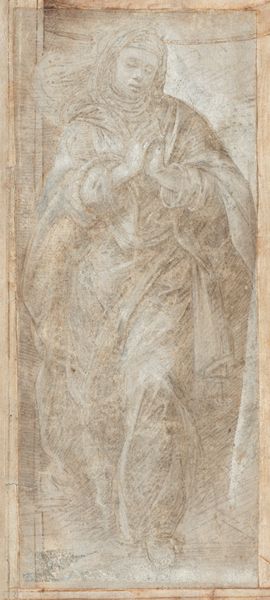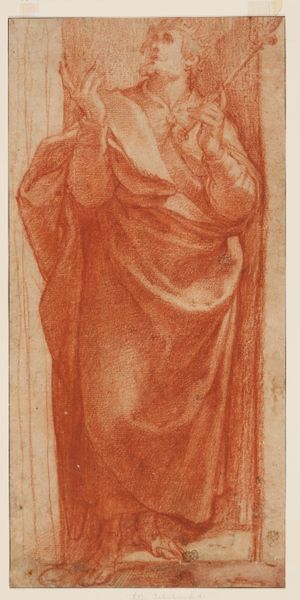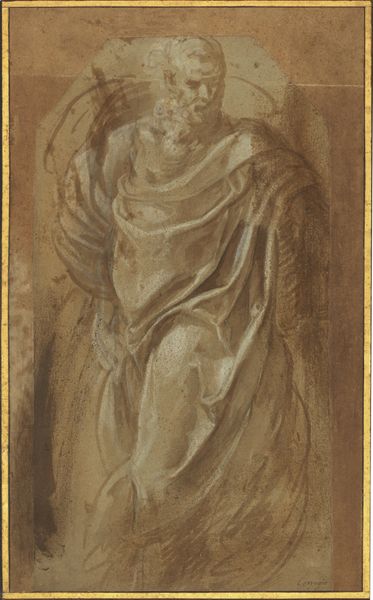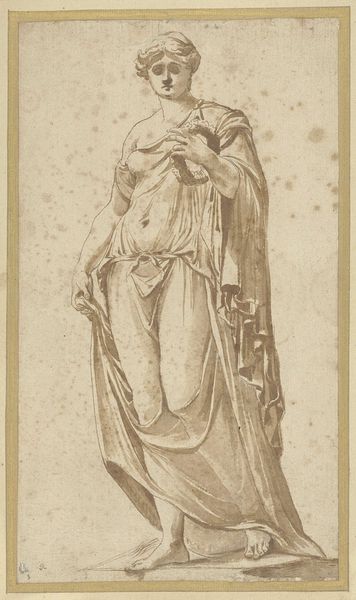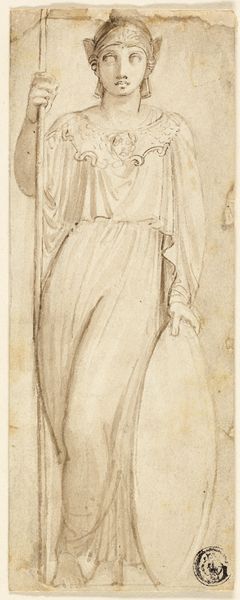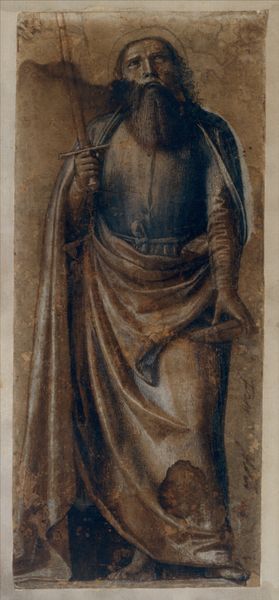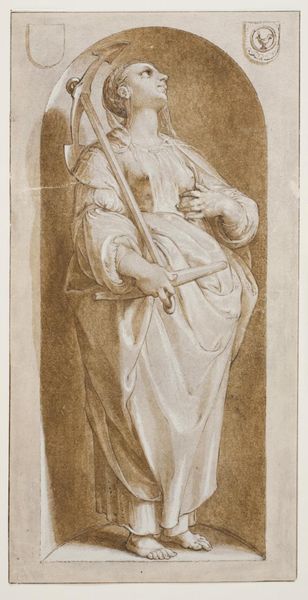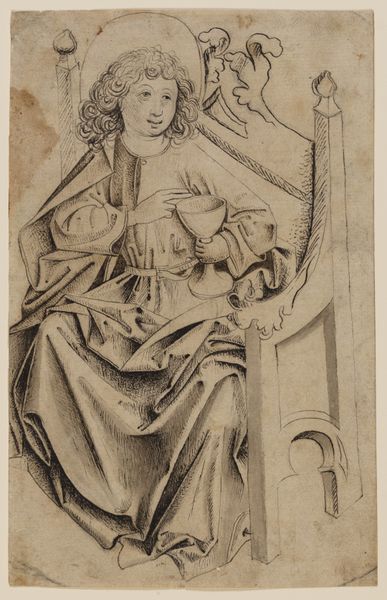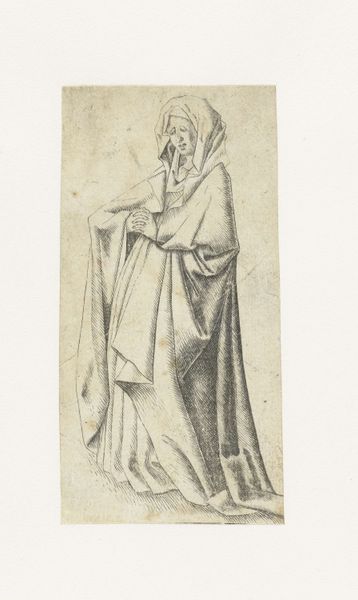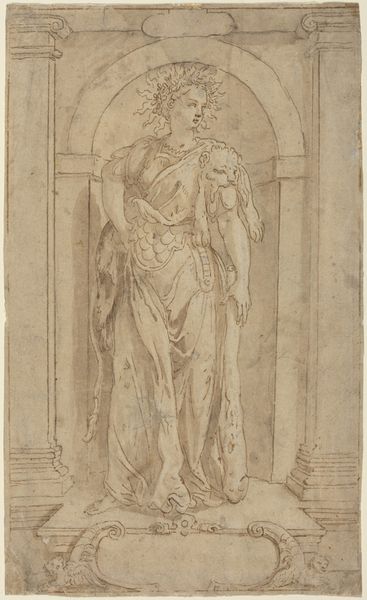
drawing, print, paper, ink, chalk, charcoal, black-chalk
#
portrait
#
pencil drawn
#
drawing
#
medieval
# print
#
pencil sketch
#
charcoal drawing
#
figuration
#
paper
#
charcoal art
#
ink
#
pencil drawing
#
chalk
#
portrait drawing
#
charcoal
#
black-chalk
#
watercolor
Dimensions: 391 × 255 mm
Copyright: Public Domain
Curator: Standing before us is a drawing titled "Saint Helena and the True Cross," created sometime between 1580 and 1590 by an anonymous artist. It's currently part of the collection at The Art Institute of Chicago. Editor: The first thing I notice is the softness of the image. It’s almost dreamlike, like a memory fading at the edges. The chalk and ink work create subtle gradations of tone, emphasizing the drapery. Curator: That softness contributes to the image's ability to function as a narrative. Helena's story is central: a powerful empress, mother of Constantine, who, according to Christian legend, journeys to Jerusalem and discovers the True Cross. Consider the cross itself, the way it anchors her—both physically and spiritually—as she stands upon these stylized clouds. Editor: Indeed, the placement of the cross vertically divides the composition; and although her hand rests gently on its surface, the simplicity and the evenness of the cross make it loom in its verticality and blockiness. Curator: Her expression is particularly intriguing; there's a sense of solemn determination there, especially when contrasted with the cherubic figures surrounding her. As an empress, Helena had access to immense power and resources. Her story provides an important reminder about powerful women throughout history who often used their privilege to defy their expected gender roles. This piece represents both earthly and heavenly power, combined through a gendered lens. Editor: The faces of the angels draw my eyes, too, the softness with which the artist was able to imbue the chalk to define these minor, smaller characters; even they feel almost haunting, looking on, passively as it may be, almost disengaged. Curator: Exactly, all the faces are haunting in that way. By emphasizing their ethereal nature, the artwork invites the audience to connect with them on a different, emotional level—emphasizing the importance of religious conviction as a motivating factor, just as much today as it was centuries ago. Editor: So, in the end, is this representation, technically sophisticated as it may be, suggesting a narrative about faith as action? I'm now reconsidering the solid, almost obtrusive form of the cross that seems to support this quiet but serious figure.
Comments
No comments
Be the first to comment and join the conversation on the ultimate creative platform.
